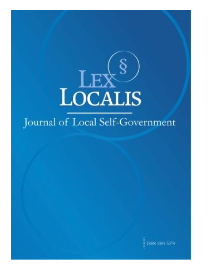THE ROLE OF EXPENDITURE MANAGEMENT IN MEDICAL AND PUBLIC HEALTH AND ITS IMPACT ON ECONOMIC GROWTH: AN INTER-STATE CAUSAL ANALYSIS
DOI:
https://doi.org/10.52152/801182Keywords:
NSDP, Medical & Public Health Expenditure, Unit Root, Cointegration, Toda-Yamamoto Granger Test.Abstract
This study explores the intricate and dynamic relationship between economic growth and medical and public health spending in the major Indian states.This paper offers a thorough econometric analysis covering the years 1980–81 to 2021–22, based on forty years of secondary data from the Reserve Bank of India's (RBI) annual publications, including State Finances: A study of Budgets and various RBI Bulletins.Time-series stationarity is checked using the Phillips-Perron and Augmented Dickey-Fuller tests to guarantee methodological rigor. As a dynamic measure of state-level economic performance, the Net State Domestic Product (NSDP) captures economic growth.The study uses advanced econometric methods, such as the Toda-Yamamoto causality test and the Johansen Cointegration Test, to clarify the direction and degree of causation between economic growth and medical and health spending.
Key findings show complex interrelationships between states: Assam and Jammu and Kashmir show a unidirectional causal relation between NSDP and health spending, indicating that economic growth is the primary driver of health expenditure in both states. Andhra Pradesh, Gujarat, Himachal Pradesh, Karnataka, Maharashtra, Manipur, Nagaland, Punjab, Rajasthan, Tamil Nadu, Tripura, and the entire country of India exhibit inverse unidirectionality (from health expenditure to NSDP), suggesting that strategic health spending can promote economic growth.Furthermore, only in Uttar Pradesh is bidirectional causality where each variable effects the othersfound, indicating a feedback loop between economic growth and health spending.In contrast, during the study period, no significant causation was found in Bihar, Kerala, Madhya Pradesh, and Odisha.
The study emphasizes the significance of approaching health spending management as a component of the states' larger political economy rather than as a separate sector. It ends with a strong policy recommendation: governments should give priority to the medical and public health sectors management through targeted investments, systemic changes, and public-private partnerships in situations where spending on these areas clearly increases NSDP. With this perspective, health should not only be seen as a welfare measure but also as a strategic pillar of human capital and long-term economic growth.
Downloads
Published
Issue
Section
License
Copyright (c) 2025 Lex localis - Journal of Local Self-Government

This work is licensed under a Creative Commons Attribution-NonCommercial-NoDerivatives 4.0 International License.








